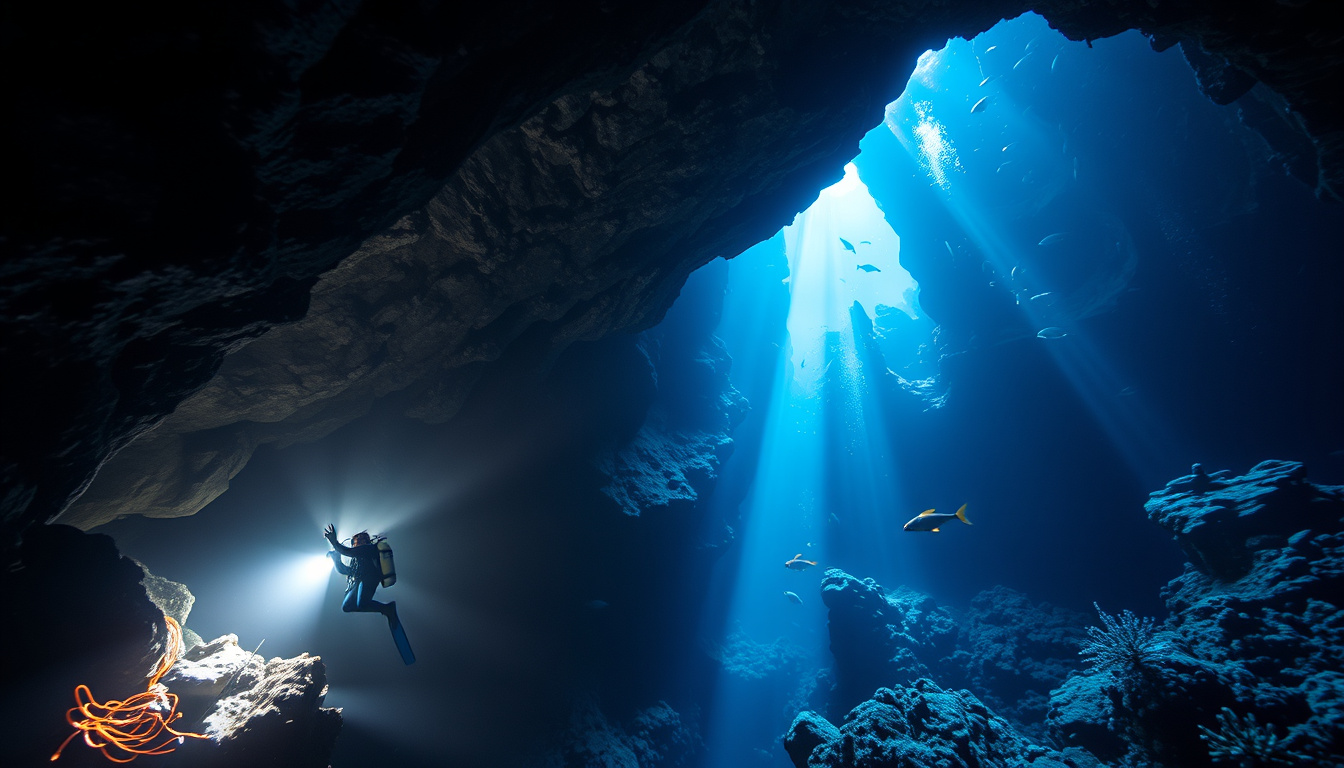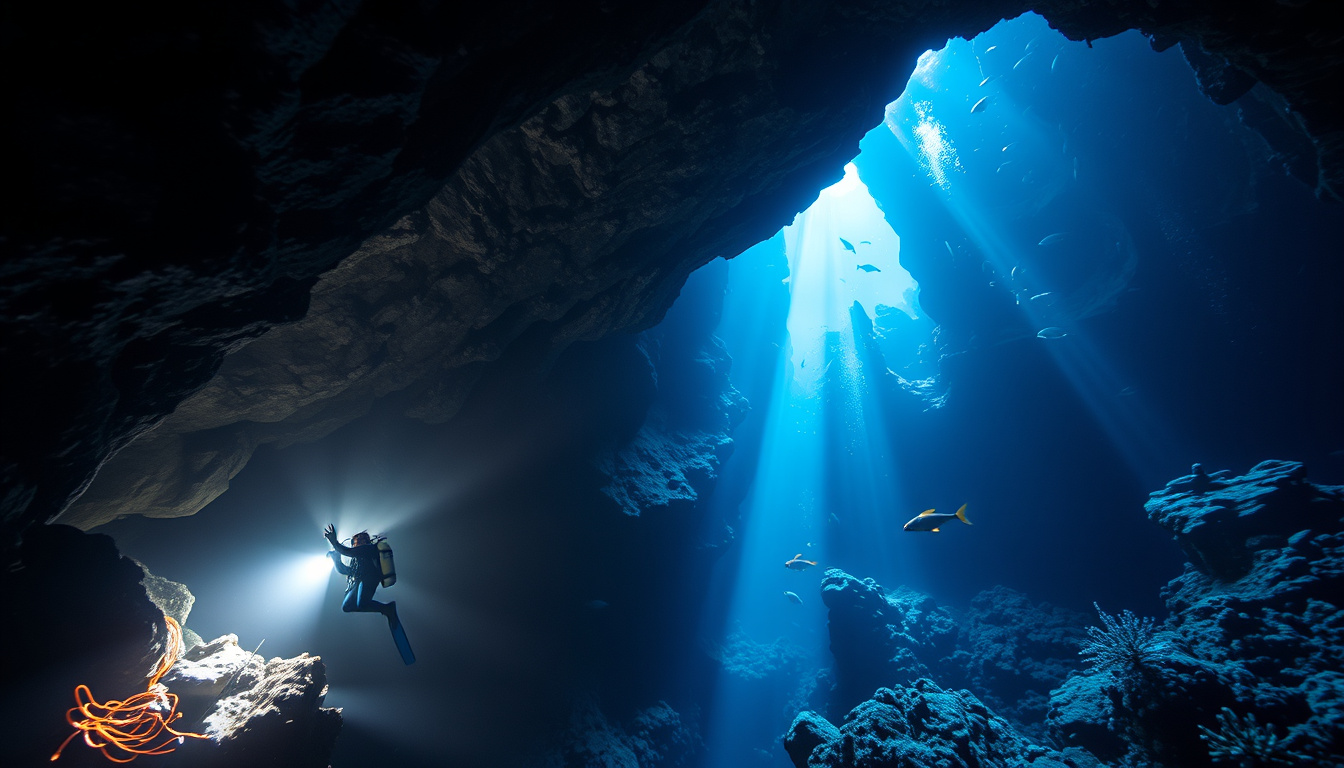Cave diving is an exhilarating adventure that draws divers from around the world into the mysterious depths of underwater caves. This unique blend of scuba diving and spelunking offers breathtaking views and a chance to explore some of nature’s most hidden wonders. However, dive enthusiasts must be well aware of both the risks and rewards of cave diving before embarking on such an exciting journey. This article will delve into the intricacies of cave diving, highlighting the potential dangers involved, the incredible rewards that can be reaped, necessary safety precautions, and ultimately, how to balance the thrill with safety.

Key Takeaways
- Cave diving presents unique challenges that require specialized training and experience.
- Understanding the risks, such as equipment failure and decompression sickness, is crucial for safety.
- The rewards include breathtaking underwater scenery and the thrill of exploration.
- Proper safety precautions, like dive planning and buddy systems, are essential for mitigating risks.
- Balancing the risks and rewards is key to ensuring a safe and fulfilling cave diving experience.
Introduction to Cave Diving
Cave diving is an exhilarating yet demanding sport that attracts adventurers from all corners of the globe. While the beauty of underwater caves is undeniably captivating, understanding the risks and rewards of cave diving is essential for ensuring a safe and enjoyable experience. This unique form of diving not only offers divers the chance to explore stunning geological formations and pristine ecosystems but also presents inherent dangers, such as potential entrapment and reduced visibility. Proper training, collaboration with experienced guides, and adherence to safety protocols can greatly mitigate these risks. Ultimately, for those willing to embrace the challenges, the rewards of cave diving—such as unparalleled exploration, a deeper connection to nature, and unforgettable memories—are plentiful.
Understanding the Risks Involved
Cave diving is an exhilarating adventure that attracts thrill-seekers and underwater explorers from around the globe. However, with the allure of this unique activity comes a set of inherent dangers. Understanding the risks involved in cave diving is crucial for anyone considering this sport. Among the various risks, divers must be aware of potential equipment failures, strong currents, and unpredictable water conditions that can lead to disorientation. Additionally, the confined spaces in caves can create complications in case of an emergency. It’s important to have proper training, reliable equipment, and a clear diving plan to mitigate these risks. On the other hand, the rewards of cave diving are equally significant, offering breathtaking underwater landscapes, rare geological formations, and the thrill of exploration. Balancing the risks and rewards of cave diving allows adventurers to experience the beauty of submerged environments while prioritizing safety, making it a rewarding pursuit for experienced divers.
‘In the end, the choices we make, the risks we take, the moments we embrace—all lead us to a greater sense of who we are. ‘ – Anonymous

The Rewards of Exploring Underwater Caves
Exploring underwater caves offers breathtaking landscapes and unique ecosystems, making the activity a thrilling adventure for many divers. However, it’s essential to understand the risks and rewards of cave diving before embarking on such an expedition. The rewards of exploring underwater caves include witnessing stunning rock formations, diverse aquatic life, and the sense of tranquility that only being submerged in water can provide. Cave diving allows skilled adventurers to experience the beauty of hidden underwater corridors that ordinary dives might not reveal. Nonetheless, the risks associated with this type of diving are significant and should not be overlooked. Poor visibility, the potential for disorientation, and the presence of strong currents can make underwater caves challenging and dangerous. Therefore, proper training and equipment are crucial for ensuring a safe and enjoyable experience. By preparing adequately and being aware of both the exhilarating rewards and the inherent risks of cave diving, adventurers can make informed decisions that enhance their underwater exploration.
Safety Precautions for Cave Divers
Cave diving presents a unique blend of adventure and challenge, presenting both the risks and rewards of cave diving that every diver must consider before descending into underwater caverns. One of the paramount safety precautions is thorough training; divers should complete specialized cave diving courses, which provide essential skills in navigation, emergency protocols, and proper use of diving gear. Additionally, it’s crucial to dive with a buddy to enhance safety through teamwork and shared expertise. Divers must also carry adequate lighting, as visibility in caves can rapidly deteriorate. Regular equipment checks and understanding the specific environment—like recognizing potential hazards such as strong currents, low oxygen levels, and possible silt-offs—are also vital to ensure a safe experience. By adhering to these safety measures, divers can significantly minimize the inherent risks, allowing them to fully appreciate the extraordinary beauty and intrigue that lies beneath the surface.

Conclusion: Balancing Risks and Rewards
In conclusion, the risks and rewards of cave diving present a compelling case for both the thrill-seeker and the cautious adventurer. While the potential dangers such as low visibility, strong currents, and the risk of entrapment cannot be overlooked, the unparalleled beauty and serenity of underwater caves offer a unique experience that few other activities can match. To ensure a safe and enjoyable dive, proper training and preparation are essential. This includes understanding the specific cave systems, utilizing the right equipment, and employing safe diving practices. Ultimately, for those who are well-informed and prepared, the rewards of cave diving can far outweigh the risks, leading to extraordinary experiences and a deeper appreciation for the underwater world.
Frequently Asked Questions
What are the main risks associated with cave diving?
Cave diving involves risks such as limited visibility, strong currents, potential for becoming disoriented, and the possibility of encountering hazardous underwater environments. Additionally, the confined spaces can lead to equipment issues or emergencies where quick escape might be difficult.
What rewards can divers expect from exploring underwater caves?
Diving in underwater caves offers rewards such as breathtaking natural beauty, unique ecosystems, and the chance to discover fossil records or archaeological artifacts. It’s an unparalleled adventure that provides a sense of accomplishment and the opportunity to push one’s diving skills to the limit.
What safety precautions should cave divers take?
Cave divers should undergo specialized training, use appropriate dive gear, maintain proper communication with dive partners, and always plan their dives carefully. It’s also crucial to have a thorough understanding of the cave system and to ensure that equipment is in good condition.
Is cave diving suitable for beginners?
Cave diving is not suitable for beginners. It typically requires advanced diving skills and specialized training to handle the unique challenges and risks involved. Aspiring cave divers should first build their experience through regular open-water diving before considering cave diving.
How do divers balance the risks and rewards of cave diving?
Divers can balance risks and rewards by thorough preparation, including extensive training, choosing dives that match their skill level, and always prioritizing safety. By understanding the dangers and actively planning for them, they can enjoy the incredible experiences that cave diving offers.

Leave a Reply